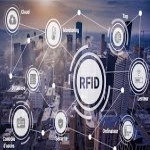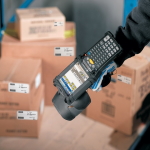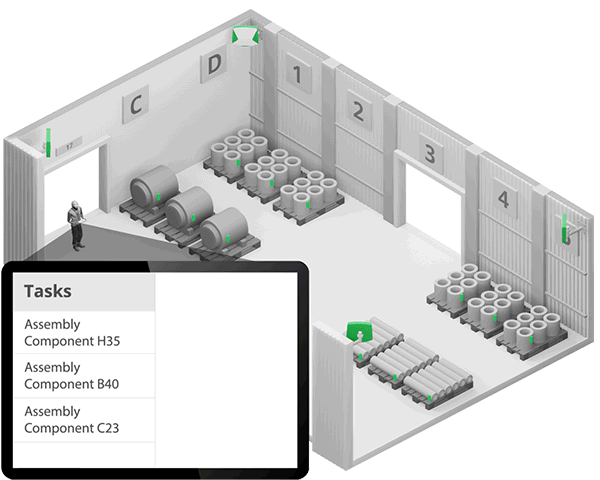Radio-frequency identification (RFID)
RFID is an acronym for “radio-frequency identification” and refers to a technology whereby digital data encoded in RFID tags or smart labels are captured by a reader via radio waves. RFID is similar to barcoding in that data from a tag or label are captured by a device that stores the data in a database. RFID, however, has several advantages over systems that use barcode asset tracking software. The most notable is that RFID tag data can be read outside the line-of-sight, whereas barcodes must be aligned with an optical scanner.
RFID belongs to a group of technologies referred to as Automatic Identification and Data Capture (AIDC). AIDC methods automatically identify objects, collect data about them, and enter those data directly into computer systems with little or no human intervention. RFID methods utilize radio waves to accomplish this. At a simple level, RFID systems consist of three components: an RFID tag or smart label, an RFID reader, and an antenna. RFID tags contain an integrated circuit and an antenna, which are used to transmit data to the RFID reader (also called an interrogator). The reader then converts the radio waves to a more usable form of data. Information collected from the tags is then transferred through a communications interface to a host computer system, where the data can be stored in a database and analyzed at a later time.
Smart labels differ from RFID tags in that they incorporate both RFID and barcode technologies. They’re made of an adhesive label embedded with an RFID tag inlay, and they may also feature a barcode and/or other printed information. Smart labels can be encoded and printed on-demand using desktop label printers.

RFID supports tag reading with no line-of-sight or item-by-item scans required.

All RFID tags within range can be detected instantly and matched with information in your database.
Applications
RFID TECHNOLOGY IS EMPLOYED IN MANY INDUSTRIES TO PERFORM SUCH TASKS AS:
• Inventory management.
• Asset tracking.
• Personnel tracking.
• Controlling access to restricted areas.
• ID Badging.
• Supply chain management.
• Counterfeit prevention (e.g. in the pharmaceutical industry).
